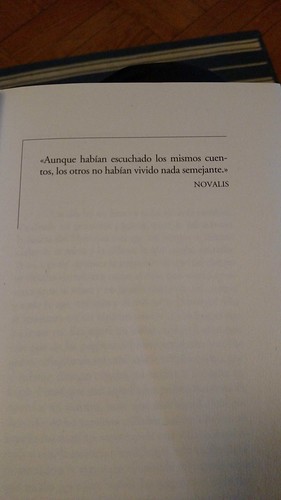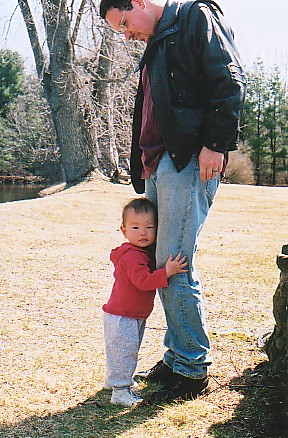|
|
Sunday, February 4th, 2018
 It seems clear that the story of Layla and Majnun is understood as an allegory for the believer's unquenchable thirst for God. But I'm having trouble getting this line of meaning out of the story itself... I'm about midway through, and Majnun's friend Nawfal has led his army against Layla's tribe, seeking to capture her and lay waste-- It seems clear that the story of Layla and Majnun is understood as an allegory for the believer's unquenchable thirst for God. But I'm having trouble getting this line of meaning out of the story itself... I'm about midway through, and Majnun's friend Nawfal has led his army against Layla's tribe, seeking to capture her and lay waste--
Like lion’s claws the
spears tore breasts and limbs, the arrows drank
the sap of life with wide open beaks like birds of
prey; and proud heroes, heads severed from
trunks, lay down for the sleep of eternity.
Majnun renounces the quest a few pages later but Nawfal is about to go on the attack again, mustering up reserves... and I'm thinking, how the hell does this fit into the allegory? The gore is nice and vivid in an epic-poetry sort of way."Love is Fire and I am Wood" makes no mention of Nawfal, it seems strange to me to ignore such a central character.
 Update turns out my confusion was based on a confusion between Nizami's epic romance and the underlying story. (See comments.)
posted morning of February 4th, 2018: 2 responses
➳ More posts about The Black Book
|  |
Tuesday, February 13th, 2018
In part II of The Black Book, Galip writes three columns in the style of Jelal and delivers them to Milliyet. Which of the columns that are reprinted in the book are by Galip? Certainly chapter 31, "The Story Goes Through the Looking Glass," is; and I thought chapter 29, "I Turned Out to be the Hero" might be as well. It was fun to read "The Story Goes Through the Looking Glass" this evening right after I had read Victoria Rowe Holbrook's introduction to Love and Beauty, and understand more of the references. I expect I will need to read the book yet another time...
posted evening of February 13th, 2018: Respond
➳ More posts about Readings
|  |
Monday, February 19th, 2018
Mehmet, Pamuk, Jelal, Galip, me?

posted morning of February 19th, 2018: Respond
➳ More posts about Identification
|  |
Thursday, February 22nd, 2018
They chose for the girl the name of Beauty
The chosen son was named Love unhappy
As time went on, some called Beauty Leyla
Some called her Shirin, and others Azra
Then some gave the name of Majnun to Love
Some called him Vamik, and others Ferhad
--Love and Beauty (305-7)
Is the intended reading that all of these epics are retellings of the same story?
posted evening of February 22nd, 2018: Respond
➳ More posts about Sufi Epics
|  |
Wednesday, March 7th, 2018
I'm thinking of an old post by Tyler Cowen at Marginal Revolution, which asserts that key to understanding Pamuk's The New Life is understanding Dante and how Dante used themes from Islamic writings in *his* La Vita Nuova. I've started reading Dante as I begin to think about rereading Pamuk. The translator's (Barbara Reynolds') introduction was not of much help in regards to figuring out Islamic sources for the work... I'm figuring one reference is to Majnun and Layla, with Dante casting himself as Majnun, approaching divinity by losing his wits over Beatrice. (The allegory doesn't really work for me, it seems kind of silly... Also Dante has twisted it around by portraying Love as a rational voice that tries to counter his mania. I guess he's attributing the mania to something like infatuation?)
 No, not infatuation, definitely Love -- see e.g.
And when I perceived her, all my senses were overpowered by the great lordship that Love obtained, finding himself so near unto that most gracious being, until nothing but the spirits of sight remained to me. But Love is also portrayed as talking him down...
posted evening of March 7th, 2018: 2 responses
➳ More posts about The New Life
|  |
In the book of my memory, after the first pages, which are almost blank, there is a section headed, "And then the murders began."
posted evening of March 7th, 2018: Respond
|  |
Thursday, March 8th, 2018
Intriguing... I had a few questions about the translations in "La Vita Nuova", so I ordered a copy of the original to do comparisons. And while searching around abebooks, happened on a copy of "Una Paragrafo Inedito della Vita Nuova, trovato fra carte del sec. XIII" (An unpublished paragraph from La Vita Nuova, found among papers from the 13th C.) by Giovanni Federzoni. Wild! It seems to be untranslated, and I'm finding precious little information about it online. Federzoni does not even have an entry in Italian Wikipedia, though his son Luigi has. The Treccani Dizionario Biografico confirms my hunch that the "unpublished paragraph" is an invention of Federzoni's. How Borgesian!
posted afternoon of March 8th, 2018: Respond
|  |
Saturday, March 10th, 2018
Wondering why the Italian translation of Pamuk's The New Life is titled La Nuova Vita instead of La Vita Nuova... If both are correct Italian it seems weird not to make the reference explicit. Maybe Dante's word order is archaic?
posted morning of March 10th, 2018: Respond
|  |
Thursday, March 15th, 2018
Wow-- if my reactions to the initial few paragraphs of this book are any indication, I'm going to find rereading Pamuk in Spanish revelatory.

 The translation is by Rafael Carpintero, who I reckon is the main translator of Pamuk into Spanish -- I previously ran across his essay on Pamuk as "Un autor en busca de tres traductores", though that was before I could read Spanish, while I was reading My Name is Red. The essay is on page 83-85 of Vasos Comunicantes #36.
posted evening of March 15th, 2018: Respond
|  |
|

Pamuk takes his epigraph to The New Life from the first chapter of Novalis's Heinrich von Ofterdingen -- the passage in full,
Wo eigentlich nur der Fremde herkam? Keiner von uns hat je einen ähnlichen Menschen gesehn; doch weiß ich nicht, warum nur ich von seinen Reden so ergriffen worden bin; die andern haben ja das nämliche gehört, und keinem ist so etwas begegnet.
posted evening of March 15th, 2018: Respond
➳ More posts about Novalis
| More posts about Orhan Pamuk
Archives  | |
|
Drop me a line! or, sign my Guestbook.
•
Check out Ellen's writing at Patch.com.
| |

